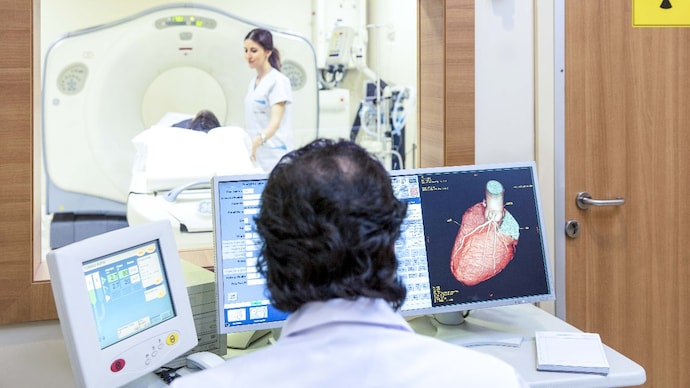New MRI technique identifies fat around the heart to predict future risk
Scientists have developed a new MRI technique to study fat around the heart, which could help in early detection and treatment of heart disease risks.

in short
- In healthy individuals, this fat around the heart plays a protective role
- But it can be harmful for people who are obese or have diabetes.
- MRI technology allows doctors to analyze different types of fat
Scientists are developing a non-invasive MRI technique to study fat around the heart, which could be a potential breakthrough in early identification of heart disease risks.
The research, led by Dr. Frederick H. Epstein of the University of Virginia’s Department of Biomedical Engineering, focuses on understanding how the composition of this fat impacts heart health.
Fat naturally surrounds the heart in a layer called epicardial adipose tissue. This fat plays a protective role in healthy individuals. However, in people with obesity, diabetes, high blood pressure or poor lifestyle habits, this fat can be harmful. It may release substances that damage the heart muscle, increasing the risk of conditions such as coronary artery disease, irregular heartbeat, and heart failure.
Cardiologist Dr. Amit R. involved in the study. “Using this new MRI technique, we can now assess the composition of fat around the heart for the first time. This may help us predict the risk of heart disease,” Patel said. And direct treatment more effectively.”
MRI technology allows doctors to analyze different types of fats in tissue – saturated, monounsaturated and polyunsaturated fatty acids. These fats are commonly associated with diet and overall health.
By quickly identifying harmful fat formation, doctors can intervene before symptoms of heart disease appear, potentially slowing or even stopping its progression.
A major challenge the researchers faced was the constant motion of the heart and lungs, which made it difficult to capture clear images. However, the team overcame this by developing advanced imaging technology that can capture precise images by holding just one breath.
Dr. Epstein highlighted the contributions of graduate student Jack Echols, who was instrumental in refining these imaging methods. “Their work allowed us to extract detailed information about fatty acids from noisy MRI signals,” Epstein said.
Early tests of the MRI technique in patients revealed important findings. People who were obese and had a heart attack had higher levels of saturated fatty acids in the fat around their hearts.
This suggests that MRI methods may become a useful tool to identify patients at risk and predict their response to treatment.
The UVA research team believes this approach could revolutionize heart disease care, providing a more targeted and personalized way to manage and reduce risks.


